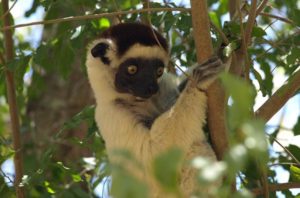
UNIVERSITY OF GOTHENBURG—Human impact can explain ninety-six percent of all mammal species extinctions of the last hundred thousand years, according to a new study* published in the scientific journal Science Advances.
Over the last 126,000 years, there has been a 1600-fold increase in mammal extinction rates, compared to natural levels of extinction. According to the new study, this increase is driven almost exclusively by human impact.
Human impact larger than the effects of climate
The study further shows that even prehistoric humans already had a significant destructive impact on biodiversity – one that was even more destructive than the largest climatic changes of Earth’s recent history, such as the last ice age.
“We find essentially no evidence for climate-driven extinctions during the past 126,000 years Instead, we find that human impact explains 96% of all mammal extinctions during that time”, asserts Daniele Silvestro, one of the researchers.
This is at odds with views of some scholars, who believe that strong climatic changes were the main driving force behind most prehistoric mammal extinctions. Rather, the new findings suggest that in the past mammal species were resilient, even to extreme fluctuations in climate.
“However, current climate change, together with fragmented habitats, poaching, and other human-related threats pose a large risk for many species”, says Daniele Silvestro.
Analyses based on large global data set
The researcher’s conclusions are based on a large data set of fossils. They compiled and analyzed data of 351 mammal species that have gone extinct since the beginning of the Late Pleistocene era. Among many others, these included iconic species such as mammoths, sabre tooth tigers, and giant ground sloths. Fossil data provided by the Zoological Society of London were an important contribution to the study.
“These extinctions did not happen continuously and at constant pace. Instead, bursts of extinctions are detected across different continents at times when humans first reached them. More recently, the magnitude of human driven extinctions has picked up the pace again, this time on a global scale”, says Tobias Andermann from the University of Gothenburg.
Extinction rates will increase further, if nothing is done
The current extinction rate of mammals is likely the largest extinction event since the end of the dinosaur era, according to the researchers. Using computer-based simulations they predict that these rates will continue to rise rapidly—possibly reaching up to 30,000-fold above the natural level by the year 2100. This is if current trends in human behavior and biodiversity loss continue.
“Despite these grim projections, the trend can still be changed. We can save hundreds if not thousands of species from extinction with more targeted and efficient conservation strategies. But in order to achieve this, we need to increase our collective awareness about the looming escalation of the biodiversity crisis, and take action in combatting this global emergency. Time is pressing. With every lost species, we irreversibly lose a unique portion of Earth’s natural history”, concludes Tobias Andermann.
______________________________

Verreaux’s sifaka. Tobias Andermann
______________________________
Article Source: UNIVERSITY OF GOTHENBURG news release
*”The past and future human impact on mammalian diversity”, published in Science Advances: https:/
______________________________
Advertisement





